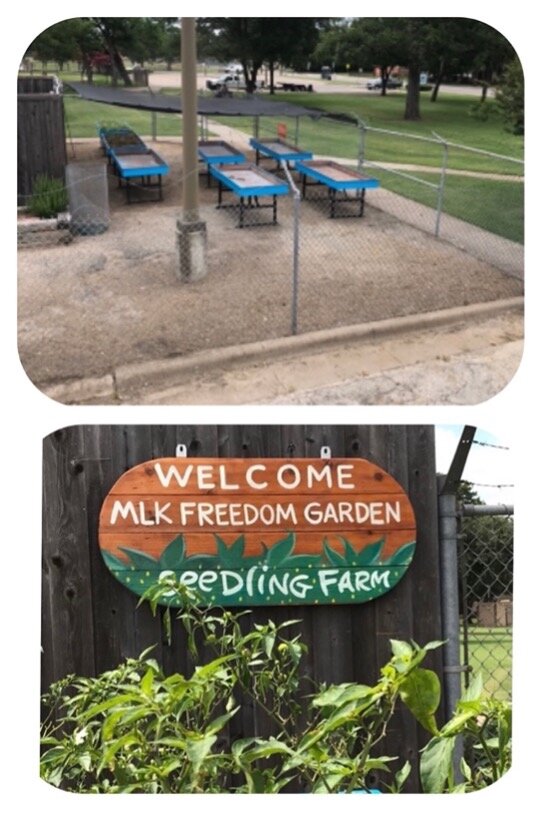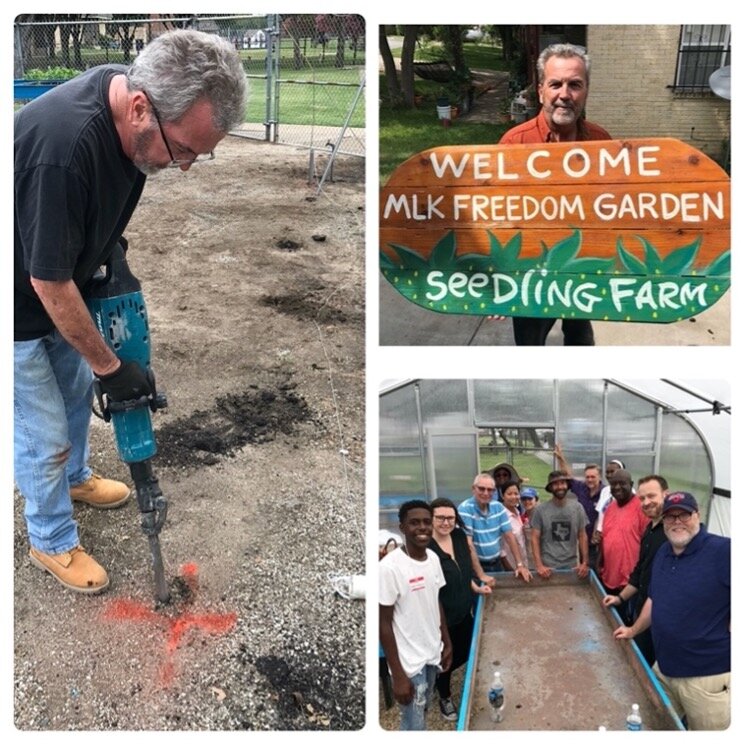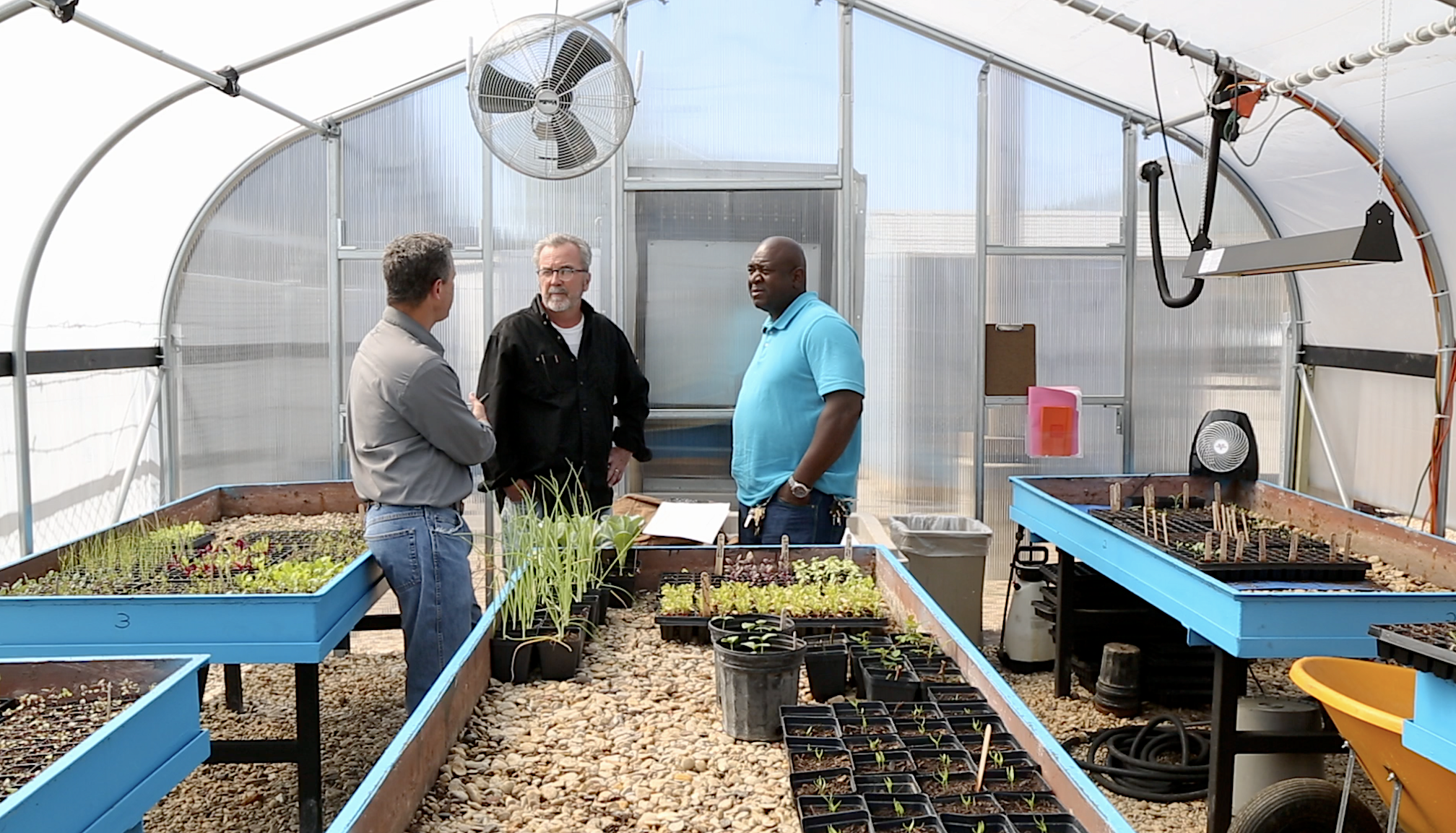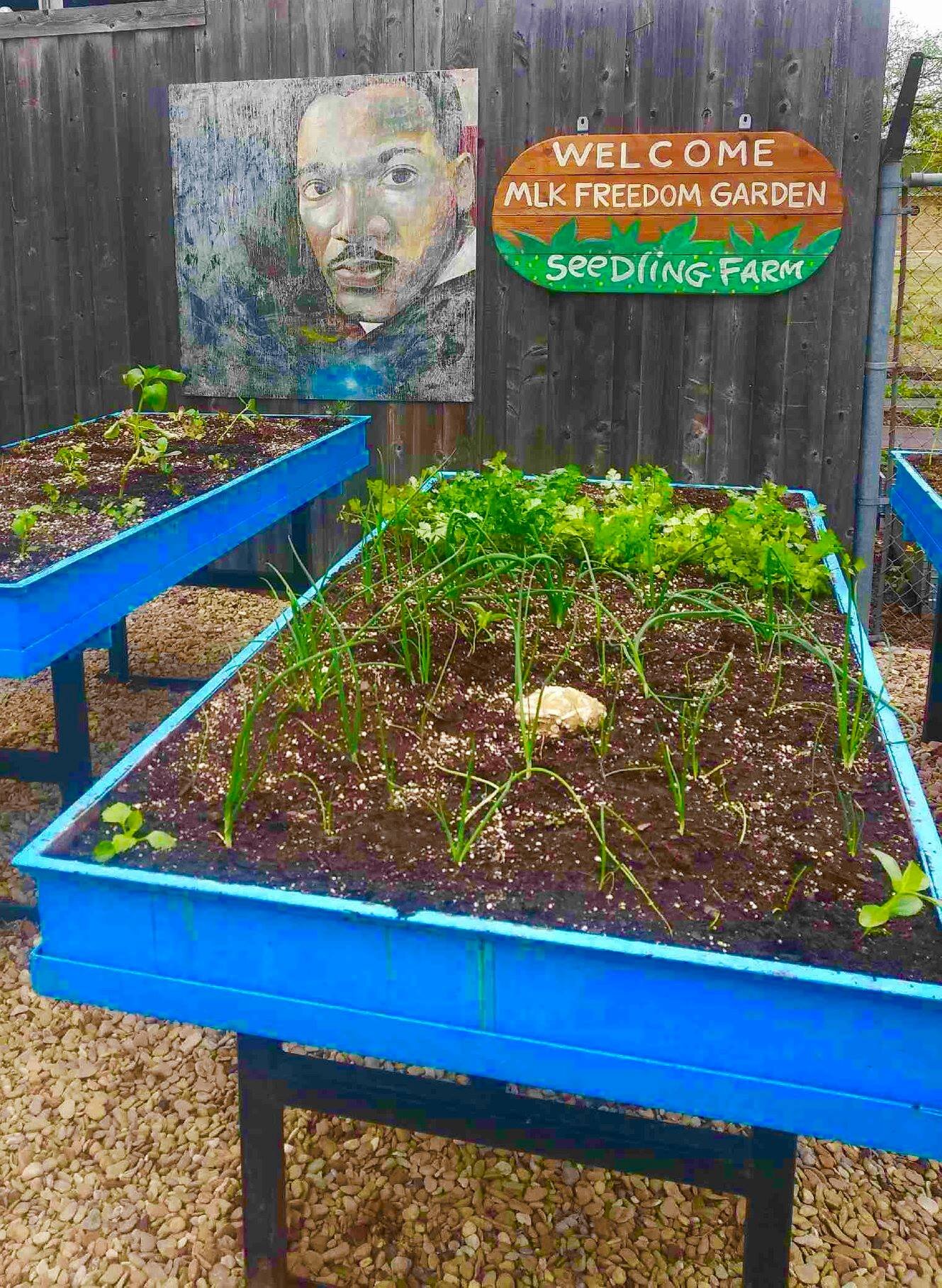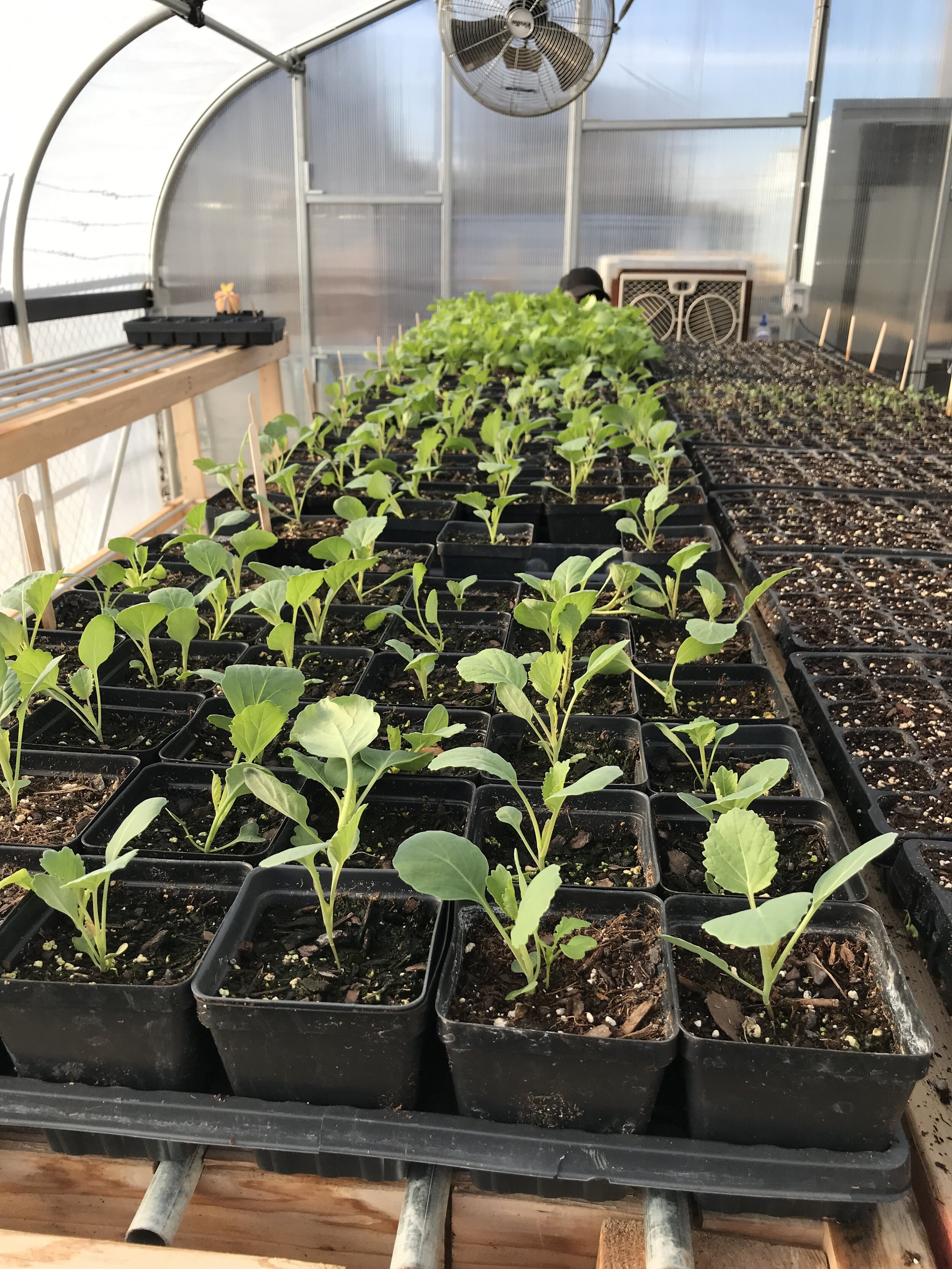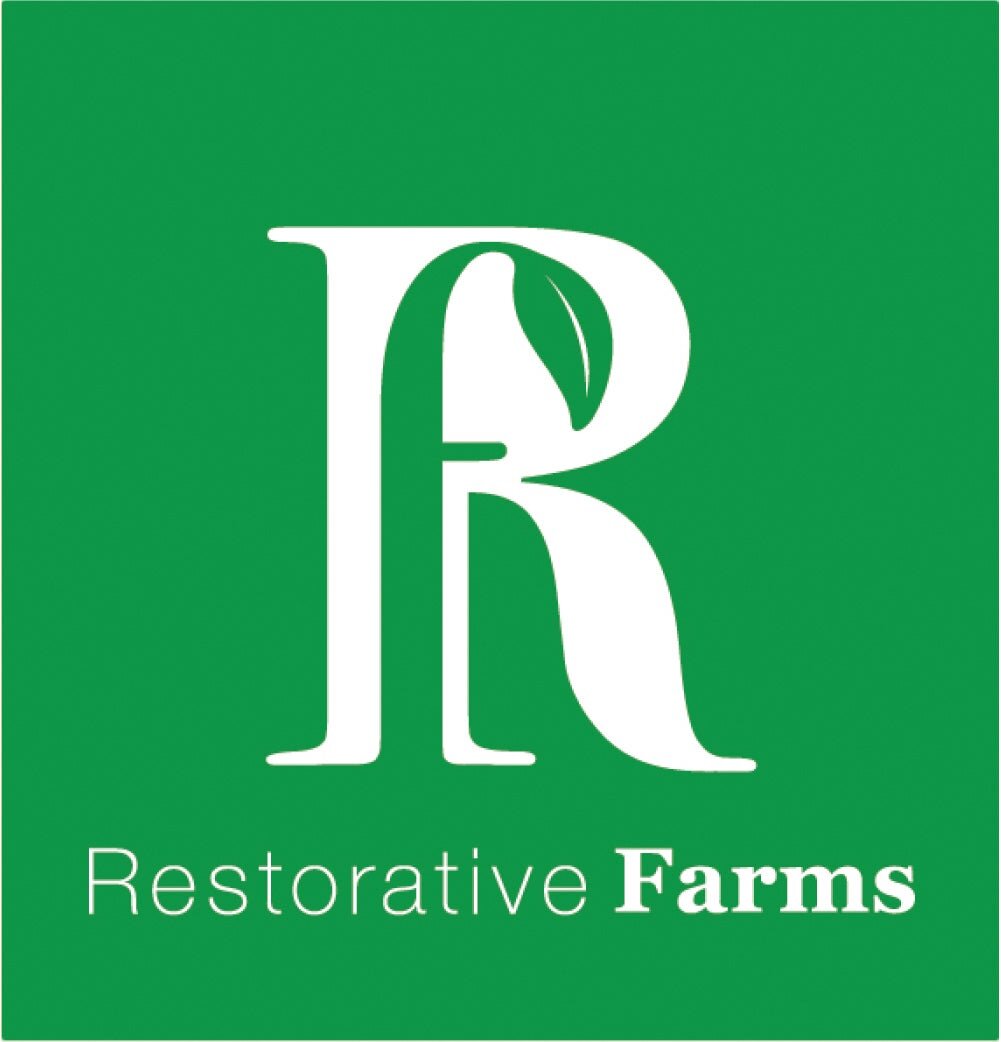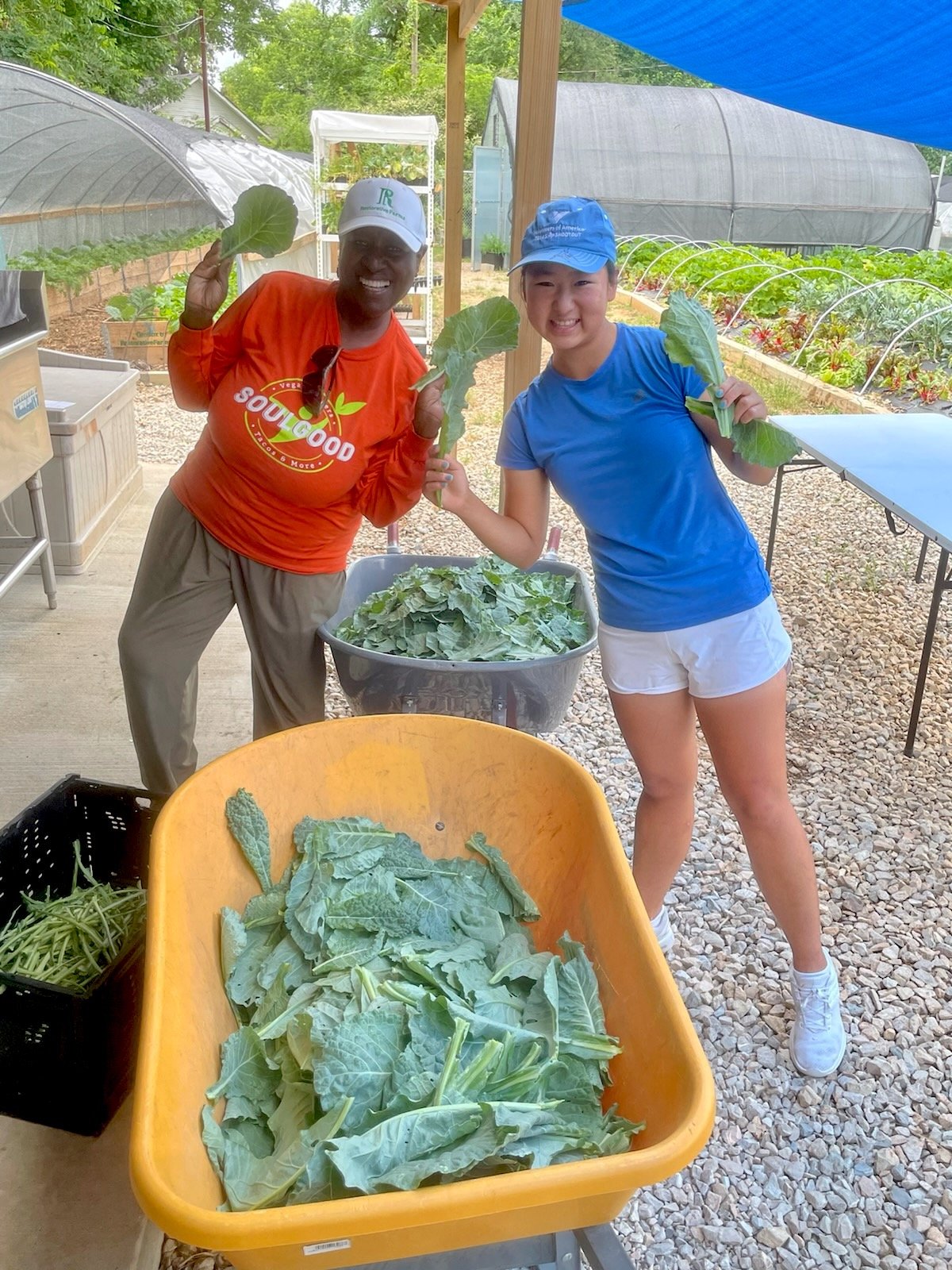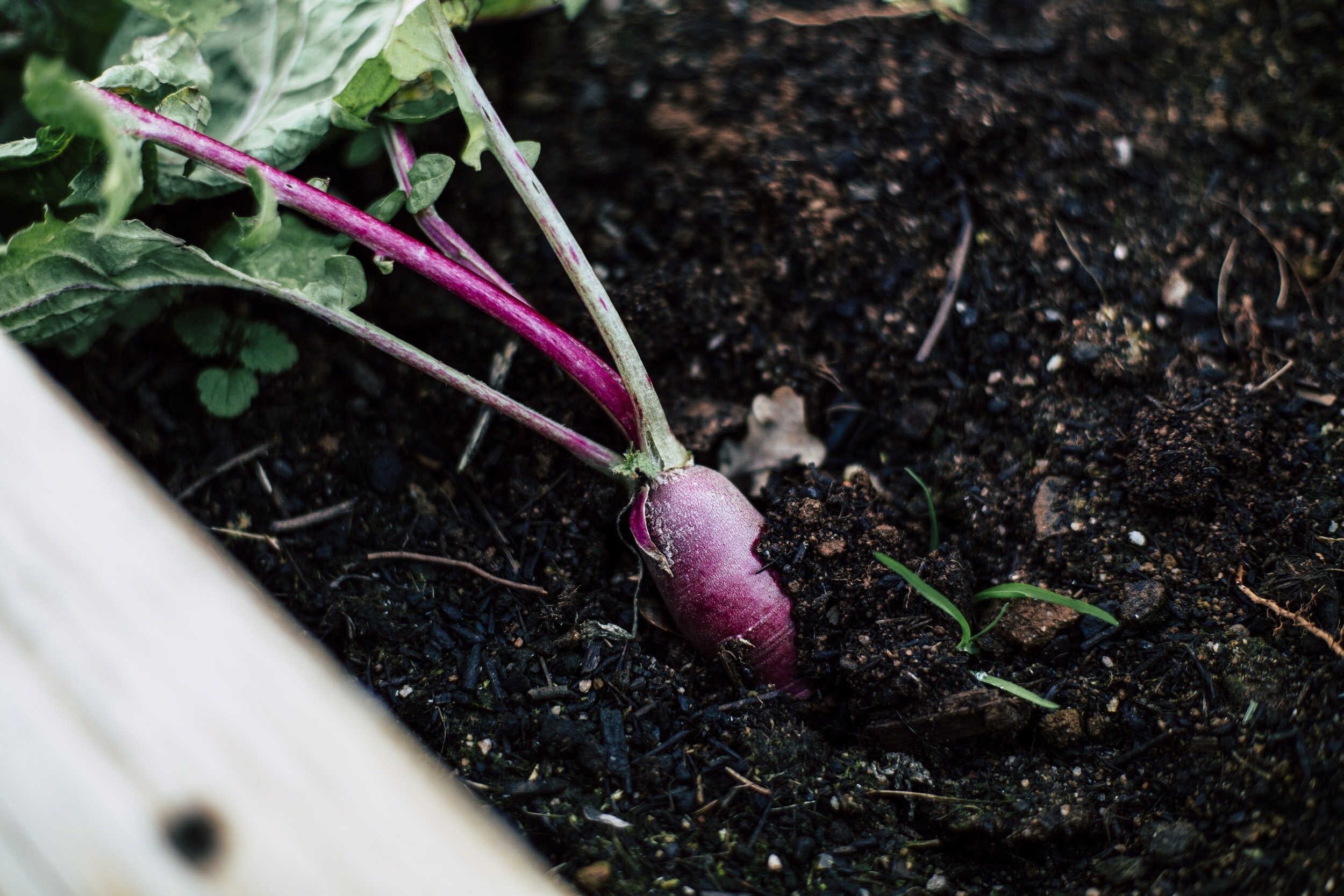
THIS IS OUR CSA BLOG
Thank you.
Your purchases & donations go to support our community-based farmers in training, our network of local farmers, food entrepreneurs, and the families who baked, grew, harvested, washed, and packed your selections. in training and several of our local partner farms. Everything is fresh and harvested less than 24 hours from when it was delivered to you.
CSA | June 02, 2022
The year that changes everything.
We hear this every year, right?
“But this year we really mean it.” Actually, we do.
We've been planning and organizing and collaborating and experimenting and measuring now for well over five (5) years.
That doesn’t mean we’re experts, though. It just means we feel we’re ready for The Next Step. The next steps. More baby steps. Wider collaborations. Deeper experimenting. More organizing, and more evangelizing.
Yes, we love to talk about what we do. We love to share the energy. And, we love to share our awesome, hand grown from hard work food.
That photo over there is from our farm. Yes, look at the nice abundance. We’re Growing A Better Dallas.
Again, we have the power - and you have the power - to change the world around you. Keeping things local does not mean sacrificing. It means community. It leads to abundance, health, and empowerment. Being stuck in a system that promotes purchasing food from hundreds of miles away is not the way forward.
-–––––––––––––––––––––––––––––––––––––––––––––––––––––––––––
Please don’t forget to get or gift an amazing GROBOX – our handmade, easy-to-use, all-in-one home planter box that funds our work. Get one HERE.
-–––––––––––––––––––––––––––––––––––––––––––––––––––––––––––
-–––––––––––––––––––––––––––––––––––––––––––––––––––––––––––
Coming Soon… In this Spring’s CSA box (NOTE: subject to availability):
From Hatcher Station Farm:
Kale
Squash
Cucumbers
Swiss Chard
Oregano and rosemary mixed
From Hwy 19 Produce:
Potatoes and onions.
From Mars Hill Farms:
1/2 doz eggs
From the one-and-only Grozilla (located at Fair Park by the famous Ferris wheel):
Win Win Choi and Red cloud Tatsoi
Microgreens: Broccoli + Kale mix
PLEASE VISIT OUR PRODUCE PAGE FOR INFORMATION AND INSTRUCTIONS ON PREPARING MANY OF THESE FINE OFFERINGS.
READ ALL ABOUT US in the Spring 2022 issue of Edible DFW magazine!
CSA | May 26, 2022
Step Into Change.
Last week, we put it out there that the most important thing for us is not just our intention, but our action. We can talk all we want about how things ‘need’ to change, but unless we’re willing to put in the hard work, make the personal connections, strengthen our team, and execute out in the field, we won’t get very far.
And so… We simply continue to Grow!
Our field crew has worked incredibly hard to maximize and optimize our Hatcher Station Farm.
The USDA (US Department of Agriculture) has been keenly interested in our work and continues to send representatives to collaborate.
Whole Foods Market continues to partner with us. And many more.
We have the power - you have the power - to change the world around you. Keeping things local does not mean sacrificing. It means community. It leads to abundance, health, and empowerment. Being stuck in a system that promotes purchasing food from hundreds of miles away is not the way forward.
-–––––––––––––––––––––––––––––––––––––––––––––––––––––––––––
Please don’t forget to get (or gift!) an amazing GROBOX – our handmade, easy-to-use, all-in-one home planter box that funds our work. Get one HERE.
-–––––––––––––––––––––––––––––––––––––––––––––––––––––––––––
In this week’s CSA box (NOTE: subject to availability):
From Hatcher Station Farm:
Squash
Cucumbers
Tomatoes
Basil
Kale
Swiss Chard
Tomatoes
Oregano
From Hwy 19 Produce:
Potatoes and onions.
From Mars Hill Farms:
1/2 doz eggs
From the one-and-only Grozilla (located at Fair Park by the famous Ferris wheel):
Central Red Mizuna and Red cloud
Microgreens: Broccoli + Radish mix
PLEASE VISIT OUR PRODUCE PAGE FOR INFORMATION AND INSTRUCTIONS ON PREPARING MANY OF THESE FINE OFFERINGS.
READ ALL ABOUT US in the Spring 2022 issue of Edible DFW magazine!
CSA | May 18, 2022
We are the change we wish to see in this world.
The most important thing for us is not just our intention, but our action. We cannot (and are not) waiting for ‘things to change’ or for someone else to do the hard work of tracking, measuring, testing, experimenting, tasting (yes, tasting!), and exploring all our real-world options and variables to create a viable, sustainable (ultimately: regenerative) agrisystem that engages everyone in the community and touches our entire city.
Word of our movement is out. We are thrilled to have the likes of Tito’s Vodka, Netafim, the City of Dallas, professional chefs, DART — and even the global titan, Toyota — now in our corner. This past weekend, we had the pleasure of hosting several people from Toyota and their families at one of our volunteer days! See the pics accompanying.
While we embrace and appreciate every single person who’s helped us voluntarily, it takes much, much more than smiling happy volunteers and we implicitly understand this. It’s built into what we do. Track, catalogue, measure, fine-tune, evaluate, and ultimately understand the real world costs and inputs that will lead to our desired output: full scale food system change and restorative justice.
As always, we invite you to be part of the smiling, happy, dirty fingernail crew that helps harvest and pack our CSA bags or helps to maintain our burgeoning farm in South Dallas.
We thank all our local partners along on our journey. It does take a village, a farm, some transportation, a few cold storage units, one amazing grow machine (Grozilla!), and tireless, energized people like Hatcher Station Farm manager, Tyrone Day, and a dedicated team that refines every detail to maximize our impact.
Please don’t forget to get (or gift!) an amazing GROBOX – our handmade, easy-to-use, all-in-one home planter box that funds our work. Get one HERE.
In this week’s CSA box (note: subject to availiabilty):
From Hatcher Station Farm:
Radishes
Squash
Cucumbers
Collards / Turnip Greens Mix (2 in 1)
From Hwy 19 Produce:
Potatoes and onions.
From Mars Hill Farms:
1/2 doz eggs
From the one-and-only Grozilla (located at Fair Park by the famous Ferris wheel):
Li Ren Choi and Win Win Choi
Microgreens: Broccoli and Red Stem radish
PLEASE VISIT OUR PRODUCE PAGE FOR INFORMATION AND INSTRUCTIONS ON PREPARING MANY OF THESE FINE OFFERINGS.
READ ALL ABOUT US in the Spring 2022 issue of Edible DFW magazine!
CSA | May 11, 2022
That Summer Feeling!
Well, the famous Texas heat doesn’t disappoint. It’s warming up now and we’re still at it, harvesting and planting and building and collaborating. All Summer long. Through the Fall. And on util we’ve changed the entire local food system to actually benefit the locals. Our team continues to grow. We have an amazing array of volunteers and partners that all feed off each other and get excited to Grow A Better Dallas!
Join us in our movement, our mission. You can always be part of the smiling, happy, dirty fingernail crew that helps harvest and pack our CSA bags. As of last week, we’re now providing dozens of low cost produce bags to the For Oak Cliff Farmers Market, a brand new monthly venture on the campus of For Oak Cliff, off Ann Arbor Road in South Dallas (South Oak Cliff!).
They’ve partnered with Parkland Health and numerous local farmers and vendors from within 100 miles to provide healthy food, interaction, information, recipes and a greater sense of community to our world.
Don’t forget to get an amazing GROBOX – our handmade, easy-to-use, all-in-one home planter box that funds our work. Get one HERE.
In this week’s CSA box (note: subject to availiabilty):
From Hatcher Station Farm:
Kale
Swiss Chard
3-in-1 Mix: Collard , Mustard, Turnip Green
Squash
Cucumbers (Pickling)
Li Ren Choi (Grozilla)
Central Red Mizuna (Grozilla)
Micros: Broccoli and pea shoots (Grozilla)
Eggs (Mars Hill)
Onion (Hwy 19 Produce)
Strawberries (Hwy 19 Produce)
PLEASE VISIT OUR PRODUCE PAGE FOR INFORMATION ON THESE FINE OFFERINGS.
READ ALL ABOUT US in the Spring 2022 issue of Edible DFW magazine!
CSA May 05, 2022
Yes, we’re owning being amazing this week!
Our awesome farmers and partners around the Dallas area are producing beautiful stuff via a variety of methods. GroZilla is cranking along like, well, a well-tuned machine (she is!). And we continue to excite people in and around the urban ag space, gaining momentum for our ultimate goal: to open source our practices and redefine our food system!
This week we had the honor and pleasure of helping Temple Shalom in Dallas get their on-site garden up and running (see pic below). And we continue to sell our amazing GROBOXES – one great person bought 10 of them! Get one HERE.
In this week’s CSA box (note: subject to availiabilty):
Microgreens Mix: Broccoli and mild mix (Mizuna, Cabbage, Kale, and Kohlrabi)
Win Win Choi and Red Cloud Tatsoi (GroZilla, the hydroponic growing machine at Fair Park)
Baby mix of Dwarf Siberian Kale, Red Russian Kale, and baby spinach (Apprentice Farm)
Eggs (Mars Hill)
Strawberries (Hwy 19 Produce)
Onions (Hwy 19 Produce)
Kohlrabi (Hatcher Station Farm) — More on Kohlrabi HERE (from Food Network)
Swiss chard (Hatcher Station Farm)
Diakon radish (Hatcher Station Farm)
Kale (Hatcher Station Farm)
Sweet bread (Wize Catering)
PLEASE VISIT OUR PRODUCE PAGE FOR INFORMATION ON THESE FINE OFFERINGS.
READ ALL ABOUT US in the Spring 2022 issue of Edible DFW magazine!
CSA April 21, 2022
Rolling right along!
Hey, if you haven’t checked out our great article in the fancy, local food championing mag, EDIBLE DFW, check it out HERE!
This week’s CSA includes:
* Collards w/Turnip Greens Mix
* Mustard Greens
* Kale
* Chinese Cabbage
* Bok Choy
* Central Red Mizuna
* Cake from Wize Catering
* Micro greens
* Strawberries
* Onions
* Potted herb: Citrus basil
* Eggs (Mars Hill)
READ ALL ABOUT US in the Spring 2022 issue of Edible DFW magazine!
CSA April 14, 2022
Spring, Spring, Spring! We’re going gangbusters and proud of it. Our community outreach and engagement is growing by leaps and bounds. We’ve got local restauranteurs and chefs stopping by to check out our farm and pick up some of our goods.
And our team is excited, growing, and producing amazingly tasty, nutritious, and vibrant foods — check out the pic of one of our high tunnels to the right!
This week’s CSA includes:
Chinese cabbage
Swiss chard
Win Win Choy (grown at our hydroponic grow machine, GroZilla)
Bok choy
Baby spinach
Sweet potatoes
Cucumbers
Broccoli
Eggs
Broccoli microgreens
Radish microgreens
With winter almost here, the outdoor season is winding down, but that doesn’t mean we stop growing!
08 December 2021
We are proud to see how our work is fueling positive change in our communities by providing jobs and economic opportunities while helping our CSA members enjoy a healthier lifestyle with fresh, locally-grown food. We know that healthy bodies help fuel healthy communities and that healthy bodies are dependent on what you put into them.
It is also clear that healthy agricultural products are a result of healthy soil. One of the most important things we do on our Hatcher Station Training Farm is work to keep our soil healthy. Healthy soil means healthier, more vibrant, more nutritious crops.
With our 2021 outdoor produce growing season almost over, we are now planning to maintain and even enhance the health of our soil with the use of cover crops.
What are cover crops? SARE, the Sustainable Agriculture and Research Education program (funded by the USDA) defines a cover crop as “a plant that is used primarily to slow erosion, improve soil health, enhance water availability, smother weeds, help control pests and diseases”.
Cover crops could be rye, radishes, clover, and a number of other varieties of plants. At our Hatcher Station farm, we will be planting a mix of nitrogen-fixing peas and mineral enhancing oats. These are crops that we will never harvest but we will terminate them, leaving them on and in the ground to provide compost for next season’s “cash crop”, a sort of “green fertilizer.”
Soil can tend to dry out and lose nutrients along with vital microorganisms when it’s left bare for any length of time. Cover crops mitigate this by providing a sort of protective canopy, improving soil health in a wide number of ways: protecting it from wind and water erosion, preventing weed growth and soil disease as well as replenishing valuable nutrients such as nitrogen to the soil for the crops that will grow there next year. Almost like magic, cover crops fix nitrogen from the atmosphere into the soil and provides fresh compost for the next growing season. The results are proven and palpable :
Less organic fertilizer needed for subsequent crops
A lower occurrence of pests and pathogens
Improved soil health as cover crop roots keep the soil aerated and loose
Nurtures a more vibrant ecosystem of microorganisms (For the best soil, we want to keep them alive and healthy)
Bottom line: Cover crops produce healthier soil which in turn produces healthier and more nutrient dense produce.
Using precision and sustainable agricultural methods such as cover crops, we are seeing great results. Growing more using less, we’re always learning and evolving. We are looking forward to next year when we can expect to have an even more productive harvests for our CSA community.
In this week’s CSA Box:
PLEASE NOTE: We do our best to fulfill every item, however substitutions may occur.
Baby Asian greens (from Grozilla, our indoor container ship growing machine!)
Dill, as a potted herb (our MLK Seedling Farm)
1/2 dozen free range eggs (Mars Hill Farm)
Lettuce (from Grozilla)
Radish (Hwy 19 Farms)
Pepper Choi (Hwy 19 Farms)
Turnips, purple top (Hwy 19 Farms)
Tomatoes (Hatcher Farm)
Diakon radish (Apprentice Farm)
Swiss chard (Hatcher Farm)
Please check out or RECIPES page for delicious dishes you can cook with many of the ingredients featured in our CSA boxes!
From ‘Gratitude Weekend’ to A Brand New Year of Growth!
02 December 2021
We hope that you had a great Thanksgiving! We at Restorative Farms have much to be thankful for. November 21st, 2021, marked the 4-year anniversary of the public launch of our Seedling Farm at MLK, a unique seedling growing venue housed on the grounds of the Martin Luther King, Jr, Community Center in South Dallas. From this small greenhouse our mission took its first step towards Growing A Better Dallas.
It’s hard to believe that November 2021 is already behind us. It was a very eventful month that featured our ‘Gratitude Weekend’ (Nov 19-21).
On Friday, we hosted a hard-working Volunteer Day featuring many of our friends at Kosmos Energy. We tended the farm and also helped prep and pack Thanksgiving ‘Fixin’s Baskets’ for distribution on Sunday (read below).
Then, on Saturday, it was an amazing, delicious, and frothy Farm-To-Table Fundraising Brunch featuring New York Times best-selling super chef and influencer Alex Snodgrass of The Defined Dish along with garden-themed cocktails from our great partners at Tito’s Handmade Vodka. See some pics from the event below.
And then on Sunday we did nothing less than partner with Whole Foods Market to distribute 100 Thanksgiving ‘Fixins Baskets’ with foodstuffs from our farm and farm partners which we handed out to the local community on Sunday!
So, while we reflect on our ACCOMPLISHMENTS (please click to see many of them!) it’s also time to look forward with gratitude and renewed energy for what else we can do create positive, real-world, on-the-ground change in our community.
We are grateful for the support of such great people and companies like Kosmos Energy, Tito’s Handmade Vodka, and Whole Foods Market. This support and sponsorship is making a difference. It sounds trite but we mean it when we say, Together, We Will Grow A Better Dallas!
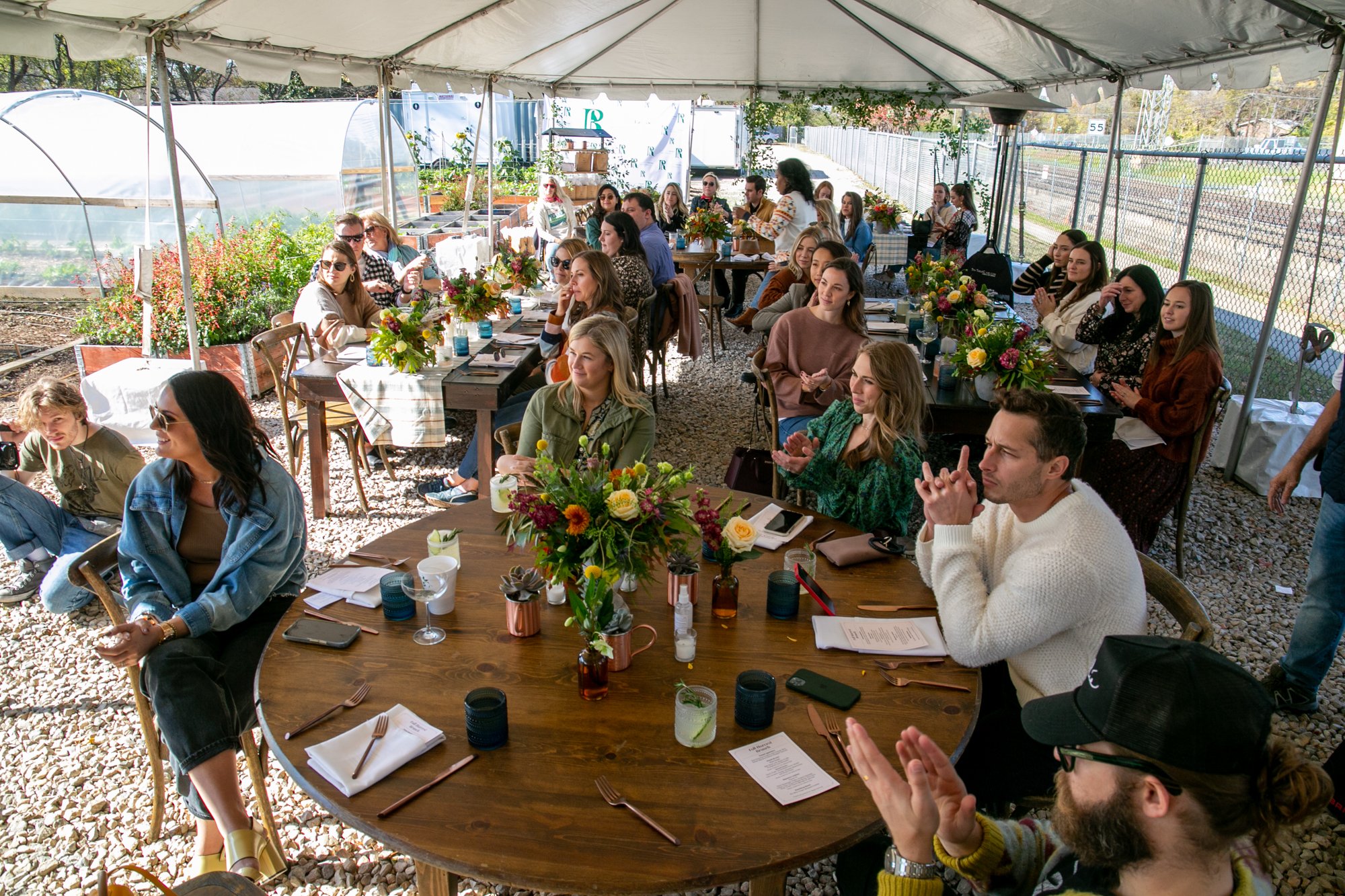
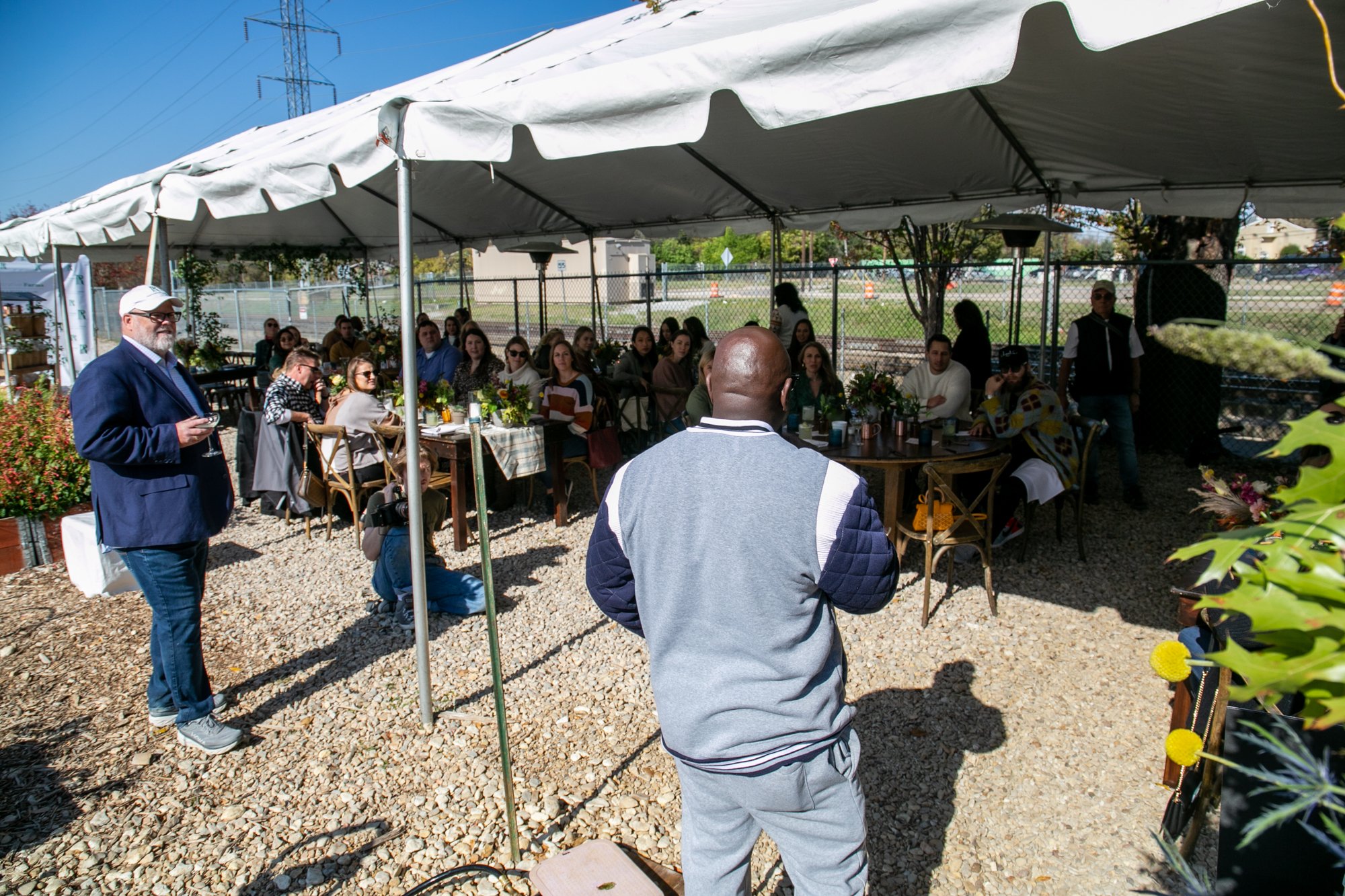
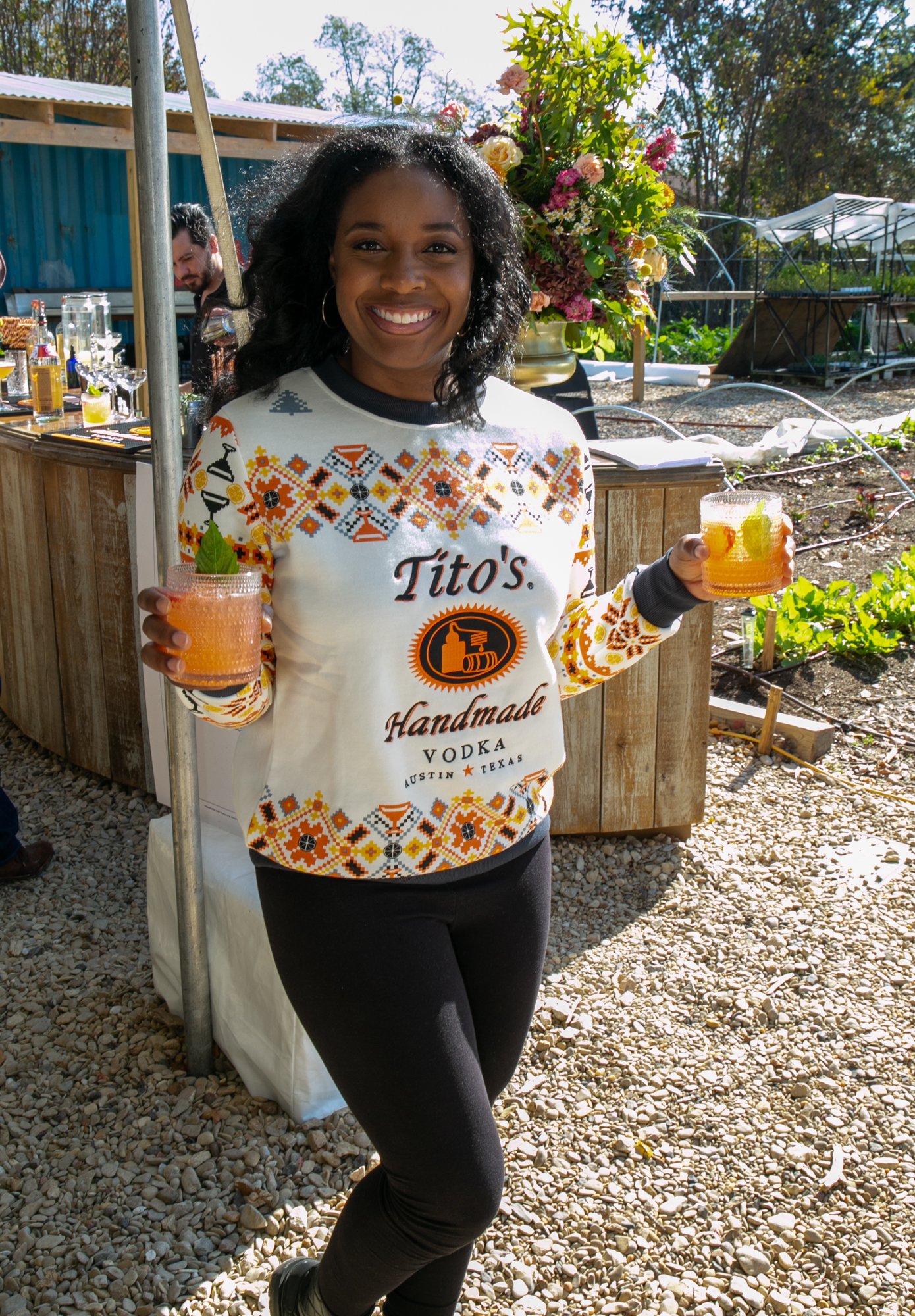
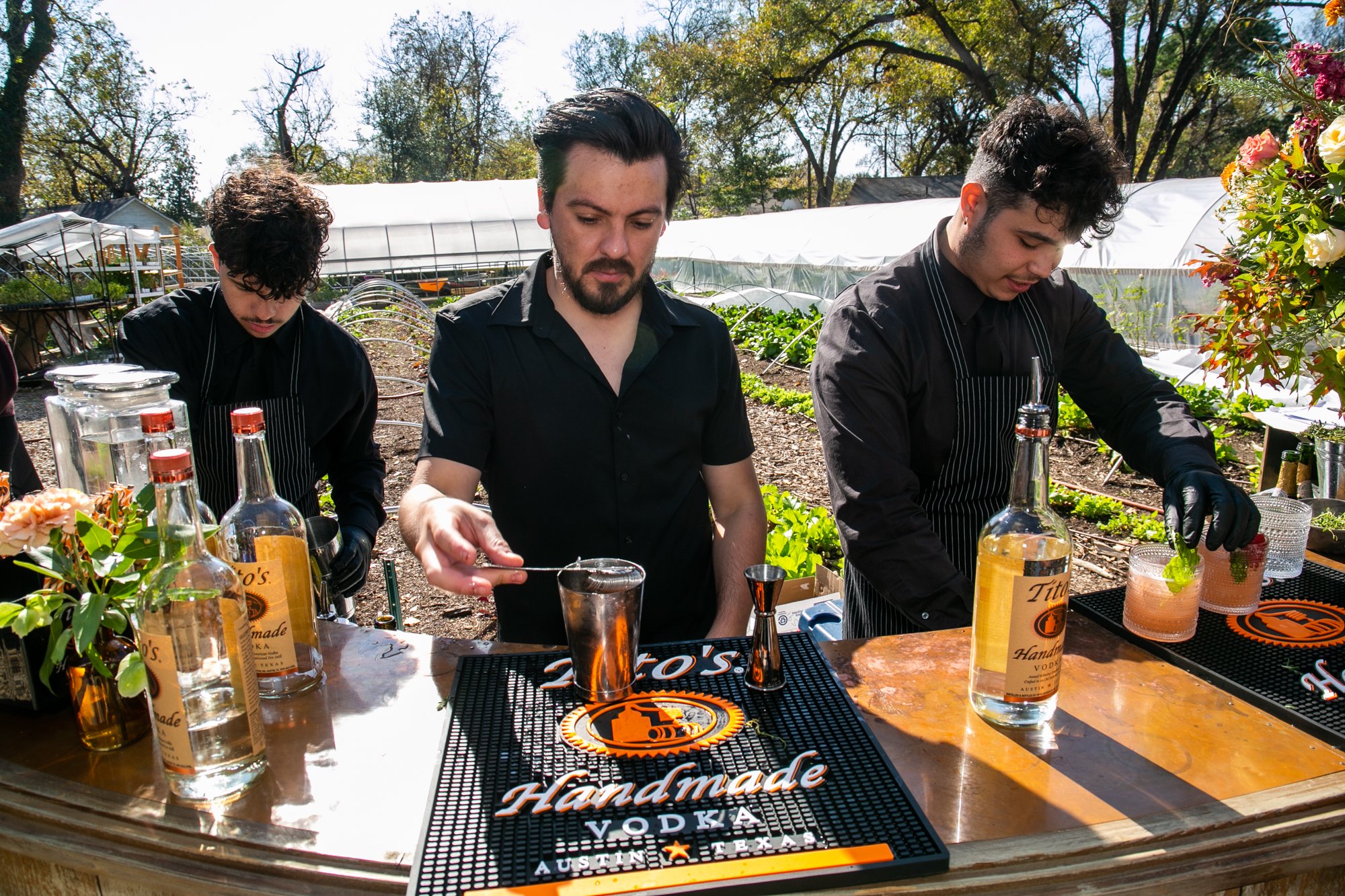

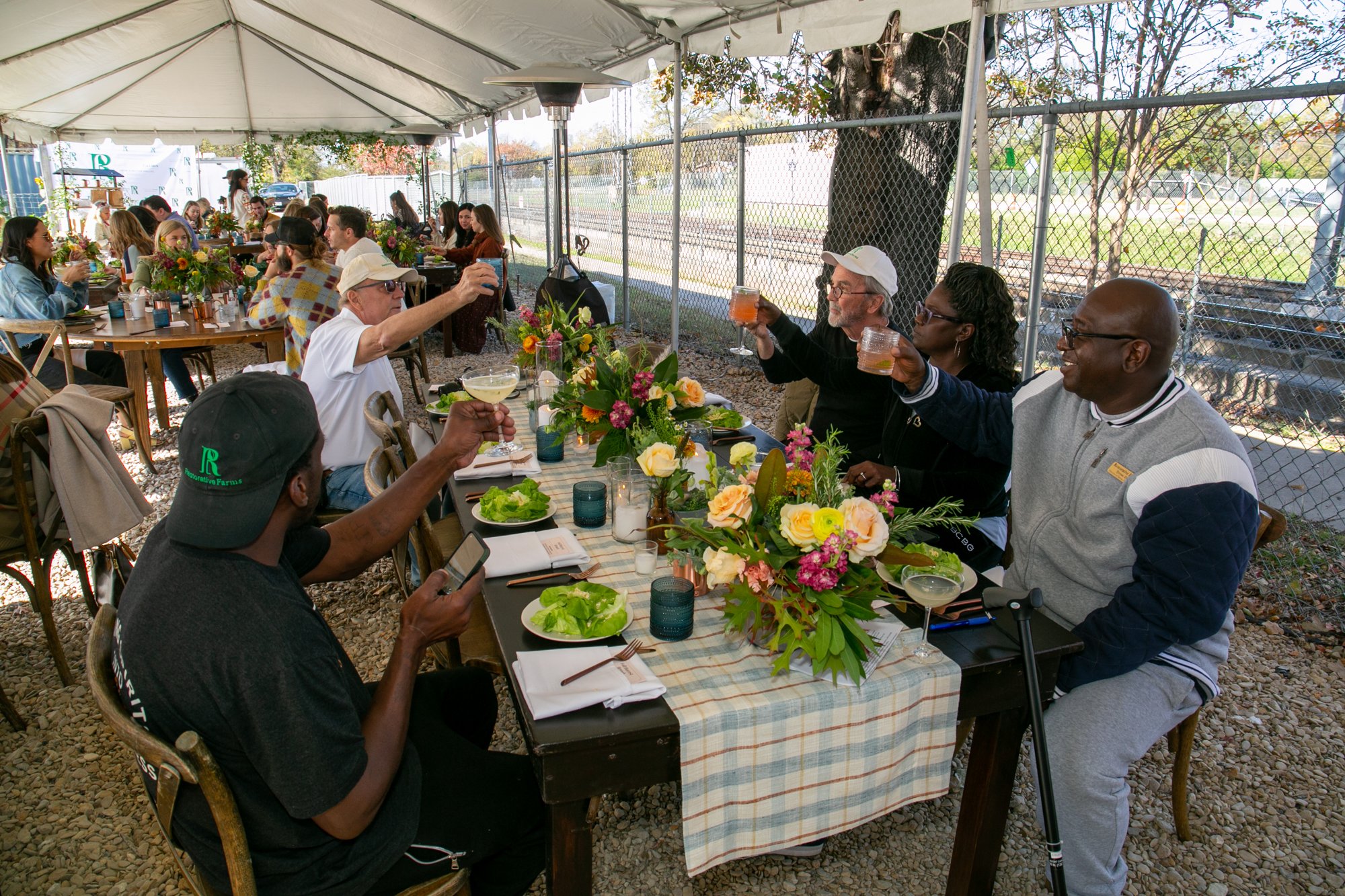
There’s a lot of talk about with the benefits of free-range and organically fed chicken eggs.
17 NOVEMBER 2021
With all the mumbo-jumbo of supermarket-speak the information about eggs can be confusing. So we thought we’d take a minute to talk about the eggs that you’ve been receiving in our weekly CSA collection.
Some of you may know that we had been including eggs produced by our long time partner, Al Smith. Sadly, Al passed away in October 2021. Al was everything we embody and we loved his commitment to producing eggs that came from truly cage-free chickens who eat an all-organic diet and have never ever been given “hormones, pesticides, antibiotics, or anything else weird” (unlike most supermarket eggs).
We now partner with the Mars Hill farm (see pic at right). Like Al, Jonathan Herb is “passionate about sustainable farming methods” and growing things the right way. The eggs that come from his chickens are also exceptional. When compared to USDA standard eggs, research has shown that eggs produced like those from Mars Hill farm have:
• 30% less cholesterol
• 25 x lest saturated fat
• 21 x more Omega- 3
• 7 x more vitamin E
• 1.5 x more vitamin A
• Over 7 x more beta-carotene
• 217 x more folate
So next time you think about picking up some eggs and comparing pricing, consider the whole story. It’s good to know your farmer.
In this week’s CSA Box:
PLEASE NOTE: We do our best to fulfill every item, however substitutions may occur.
Spiced nuts
Sweet potatoes pie
Red Cabbage
2 heads of lettuce
Golden beets and greens
2 lbs white potatoes
Celery
2 lbs onion
Carrots
Microgreens
Tomatoes
Turnip and greens
Radish and greens
Collards
Mustard greens
Seasons potted herb (parsley, sage and thyme).
BONUS: WATCH local chef & caterer Shanay Wizely of Catering Done Wizely cook up some awesome, wholesome, delightful ‘Quick Greens’ made with ingredients from our CSA box! Add this to your holiday feast to add some color and vitamins.
And don’t forget to check out our RECIPES page to see this week’s featured recipe for what you can cook with some ingredients from your CSA.
If you make this dish or another on our Recipes page, please send us your pictures HERE. We all enjoy seeing you and your families enjoying our products.
Thank you for supporting our mission to Grow A Better Dallas!
The delicious fresh produce that you’re receiving this week from our Hatcher Station Training Farm is the result a type of growing philosophy called “SPIN” farming.
11 NOVEMBER 2021
The term “SPIN” is an acronym for Small Plot Intensive farming.
With the Hatcher Station Training Farm, we wanted to create a template that others would be able to easily follow in other similar communities that would not only deliver abundant production but also be a catalyst for economic impact. These communities all face the same barriers: access to land, little capital to invest in equipment, water, fertilizer and other inputs, as well as difficulty in “going to market”.
The key principles behind SPIN farming are all about growing smarter not harder, delivering the most production with the least amount of land (less than an acre), limiting costs by applying the best utilization of local inputs (compost, water, etc) with the most consistent delivery of produce across the calendar.
A key component of SPIN farming is planning. For us, this means looking ahead. With an eye to desired harvest times, we know in advance what plants should go where and when. Knowing these projected harvest dates allows us to stagger seed germinations to fit those specific plants’ expected maturity date. Instead of one huge harvest, we have a steady weekly supply of fresh produce. Once a harvest is exhausted a new crop of seedlings are “waiting the wings”, ready to be rotated into the growing beds for the next harvest. SPIN farming gives small plot farmers an essential framework that makes the business side of farming drive the agriculture rather than the other way around.
In this week’s CSA Box:
PLEASE NOTE: We do our best to fulfill every item, however substitutions may occur.
Mixed types of Bok Choi (Hwy 19 & Hatcher Apprentice Farm)
Bush Beans (Hatcher)
Arugula (Hatcher)
Red Bloom &/or Radish French Breakfast (Hwy 19 & Hatcher)
Collards Green (Hwy 19)
Green Tomatoes (Hatcher & Texas A&M Agri-Life Farm)
2 Head of Lettuce (GroZilla)
Microgreen red stem (MLK Seedling Farm)
Potted Herb – Cilantro
Sweet Potato Bread – Wize Catering
Thank you for supporting our mission to Grow A Better Dallas!
Don’t forget to check out our RECIPES page to see this week’s featured recipe for what you can cook with some ingredients from your CSA.
If you make this dish or another on our Recipes page, please send us your pictures HERE. We all enjoy seeing you and your families enjoying our products.
CSA | Nov 04, 2021
Autumn is definitely upon us. And while that signals the winding down of our growing season, it’s also ushers in the fall harvest and the season of Thanksgiving. We are looking forward to our “Fall Harvest Weekend” – November 19 -21 – which will signal the launch our first major fundraising campaign as well as provide an opportunity to give back even more to the community in which we’re growing food, creating jobs, and fostering hope.
The weekend will culminate with Sunday’s, November 21st “Thanksgiving Dinner Fixins’ Giveaway” that will provide a turkey and all the ingredients necessary to make a traditional Thanksgiving dinner to over 100 local community families. This day is being sponsored and supplied by Whole Foods Market.
But Sunday’s event could only happen with the help of the hands of our volunteers from Kosmos Energy who put these bags of food together. They’ll be joining us at the Hatcher Station Farm on Friday, November 19, to help harvest and assemble all the ingredients in those bags. Volunteer time: 11 am to 4 pm.
Saturday will bring the first of what we believe will be many more “Farm-To-Table” fundraising events. What promises to be an amazing brunch is being curated by New York Times best selling cookbook author, Alex Snodgrass, known as “The Defined Dish”. In partnership with Tito’s Handmade Vodka and their Block to Block program, Alex will present a simple, healthy local harvest brunch prepared by Dallas’ Vestals Catering served along with a selection of Tito's garden-themed cocktails.
And everything we do would not be nearly as possible without the support of great partners like Kosmos Energy as well as Tito’s Handmade Vodka and Whole Food Market.
Thank you for supporting our mission to Grow A Better Dallas!
Don’t forget to check out our RECIPES page to see this week’s featured recipe for what you can cook with some ingredients from your CSA.
If you make this dish or another on our Recipes page, please send us your pictures HERE. We all enjoy seeing you and your families enjoying our products.
The list of items in this week’s box includes:
PLEASE NOTE: We do our best to fulfill every item, however substitutions may occur.
2 Heads of Lettuce (Grozilla)
½ eggs (Mars Hill Farm)
Baby Collard (Hwy 19 Farm)
French Breakfast Radish (Hwy 19 Farm)
Turnip greens (Hwy 19 Farm)
Kale (Hatcher Farm)
Swiss Chard (Hatcher Farm)
Bush Beans (Hatcher Farm)
Bok Choi (Hatcher Farm)
Micro Greens- red stem (Apprentice Farm)
Sweet Italian Basil Potted Herb (MLK Seedling Farm)
Sweet and spiced nuts
CSA | Oct 28, 2021
This week we would like to highlight a very important person in our Restorative Farm family: Charles Spencer, one of our key Associate Farmers.
Charles is a Dallas native who has personally seen the defamation of the Dallas community regarding fresh foods in lower-income areas. He is a firm believer in the mission of Restorative Farms to create a scalable, self-sustaining, community-empowering, urban farm system.
“We farm because growing food for our community makes sense. We farm out of care. We farm out of love—for the land and for people. We farm out of hope for the future.”
-Charles Spencer
Charles's journey to becoming an urban farmer encompasses a lot of hard work and a huge openness for learning. He believes that to eventually succeed and become a true “professional” farmer, you must first become a master of the basics. Farming is about the details and Charles doesn’t overlook any of them.
One of the tall tasks he finds both challenging and intriguing is not only how you grow food for a single harvest, but how to create a truly sustainable farm. Charles points out – and looks up to – Tyrone Day (one of our co-founders and the lead Hatcher Station Farm Manager) who brings 20+ years of experience being a horticulturist as being a mentor as well as friend in the work to uplift the community that they both come from and call home.
“I like to farm because I truly feel it has made me a better person, individually and for our community,” he says. Although Charles’s journey in farming has really only just begun, he is dedicated to having his own farm one day. For now, as he learns the ins and outs of planting, growing, and farm management, he takes pride in providing fresh fruits and vegetables to those in need in his community. //
Thank you for supporting our mission to Grow A Better Dallas!
Don’t forget to check out our RECIPES page to see this week’s featured recipe for what you can cook with some ingredients from your CSA.
If you make this dish or another on our Recipes page, please send us your pictures HERE. We all enjoy seeing you and your families enjoying our products.
The list of items in this week’s box includes:
PLEASE NOTE: We do our best to fulfill every item, however substitutions may occur.
Bib lettuce (GroZilla Farm)
Red oak leaf (GroZilla Farm)
Radish “Crimson Giant” (Hatcher Farm) with greens
Radiash “Diakon” (Hatcher Farm)
Radish “watermelon” (Hwy 19 Farm) with greens.
Lacinato Kale (Hwy 19 Farm)
Squash & pepper mix (Hatcher & Hwy 19 Farm)
Okra (Hwy 19 Farm)
Microgreen radish (Hatcher Farm)
Thai and citrus basil (RF Apprentice Farm)
Fresh Eggs (Mars Farm)
Pound cake (Wize catering) NOTE: this is a baked item.
CSA | Oct 20, 2021
Thank you for enrolling and supporting us this season! We’re honored and thrilled to be able to bring our bounty to your table.
We at Restorative Farms are saddened to announce that our long-time partner Al Smith has passed away. Mr. Smith (photos at right) was known as an inter-generational farmer, meaning he was carrying the legacy of farming from his mother on to his granddaughters. His free-range chickens produce fresh brown eggs that are the stars of Restorative Farms CSA boxes, alongside his leafy spinach and other homegrown greens.
Al was raised in Detroit by former sharecropper parents who had once worked in the economically exploitative agricultural system of Louisiana. Al and his wife, Yulonda, live on a property just south of Dallas that Al bought for her as a surprise after she fell in love with a beautiful tree in the yard. This is where Al’s Eggs began; a business that started with just a few chickens and a joy for selling eggs in the local neighborhood. After raising a few different breeds, they chose Red Sex-Link chickens for their large brown eggs and friendly temperament. It quickly became a family business.
“It made him feel closer to his mom,” Yulonda says. “And when our grandbabies that live in Texas were born, he wanted them to know how to do this kind of thing. It was their thing to do together, the chickens and plants; that was grandpa and Amaya time.”
The granddaughters weren’t the only young people learning from Al and Yulonda’s farm. Kids ranging in age from elementary school to college come out to the property to study composting, vegetable growing, and other farming practices. Al says the mission of his farm and the CSA boxes are both means of getting good food to the local community. Al will truly be missed by all partners at Restorative Farms, as well as from everyone in his community.
With Al firmly in mind, know that your purchase has gone to support community-based farmers in training at Restorative Farms as well as several of our local partner farms.
On a happier note, we want to welcome a new partner to the Restorative Farms mission: Whole Foods Market who gave us a generous grant to expand our Hatcher Station Training Farm infrastructure and growing capacity. They also made available to us their library of thousands of recipes, one of which is featured here today: “Vietnamese Daikon Salad”
Everything in our CSA is fresh and harvested less than 24 hours from when it was delivered to you. All the proceeds from sales go to support the local farmers, food entrepreneurs, and their families who baked, grew, harvested, washed, and packed your selection for today.
Please see below for what’s in this week’s pack.
Don’t forget to check out our RECIPES page to see this week’s featured recipe for what you can cook with some ingredients from your CSA.
If you make this dish or another on our Recipes page, please send us your pictures HERE. We all enjoy seeing you and your families enjoying our products.
In this week’s box | 10.20.21
PLEASE NOTE: We do our best to fulfill every item, however substitutions may occur.
Pea Micro Greens (Apprentice Farm)
½ doz. fresh egg
South Dallas food entrepreneurs product TBD
Turnip and Turnip greens (Hatcher)
Daikon Radish (Bobby)
Bok choy (Hatcher & Apprentice Farm)
Arugula Salad mix (Apprentice Farm)
Two heads of lettuce – Bib, red oak or Spring fresh
Fresh baby Okra (Bobby)
Last of the season squash, Zucchini and mix peppers. (some squash from bobby and Hatcher)
Potted herb – Sweet or Citrus basil. (MLK)
CSA #3 | Fall 2021
Welcome to your third CSA for Fall 2021. Thank you for enrolling and supporting us this season. We have so much love and fresh product to bring to your table.
We would like to highlight the individuals that work and learn on the farm. Some of our growing team come to us through fellow S. Dallas non-profit, Miles of Freedom, whose mission is “To equip, empower, and employ individuals returning home from prison and provide support and assistance for families and communities impacted by incarceration.” Through our partnership with Miles of Freedom, we’re able to give those who have been incarcerated valuable farming and cultivating skills; help them build a resume that shows that they are proficient in all aspects of farming; and have developed some of the business acumen to help them run their own farm.
The Seedling Farm at the Martin Luther King, Jr. Freedom Garden in South Dallas is where our own journey all began in 2017. A seedling farm is one of the most important spaces for our farm. Our Agrisystem model features a central seedling farm that supplies a cohort of outlying farms as well as serves as the hub of our “hub & spoke” model where these small farms can share resources and knowledge to maximize land use, growing technologies, and ultimately profitability that will return to and stay within the community. The Seedling Farm can produce upwards of 40,000 seedlings in a year!
We can precisely calculate what our crop yield could be based on how many seedlings are produced in the greenhouse. With our new greenhouse at our Hatcher Station farm soon to be fully operational as a transplant nursery, we will be able to produce 100,000 more seedlings a year.
Below the information about what’s in this week’s box are pictures from the humble beginnings of the Seedling Farm, showing friends from the community as well as some members of our Restorative Farms leadership.
And don’t forget to check out our RECIPES page to see this week’s featured recipe for what you can cook with some ingredients from your CSA!
In this week’s box.
PLEASE NOTE: We do our best to fulfill every item, however substitutions may occur.
Fresh Eggs
Microgreen
Lettuce
Icicle (Daikon) Radish (more on daikon HERE)
Turnip & Turnip Greens
Okra
Mixed Squash
Mixed Peppers
Sweet Potato Bread (baked item)
